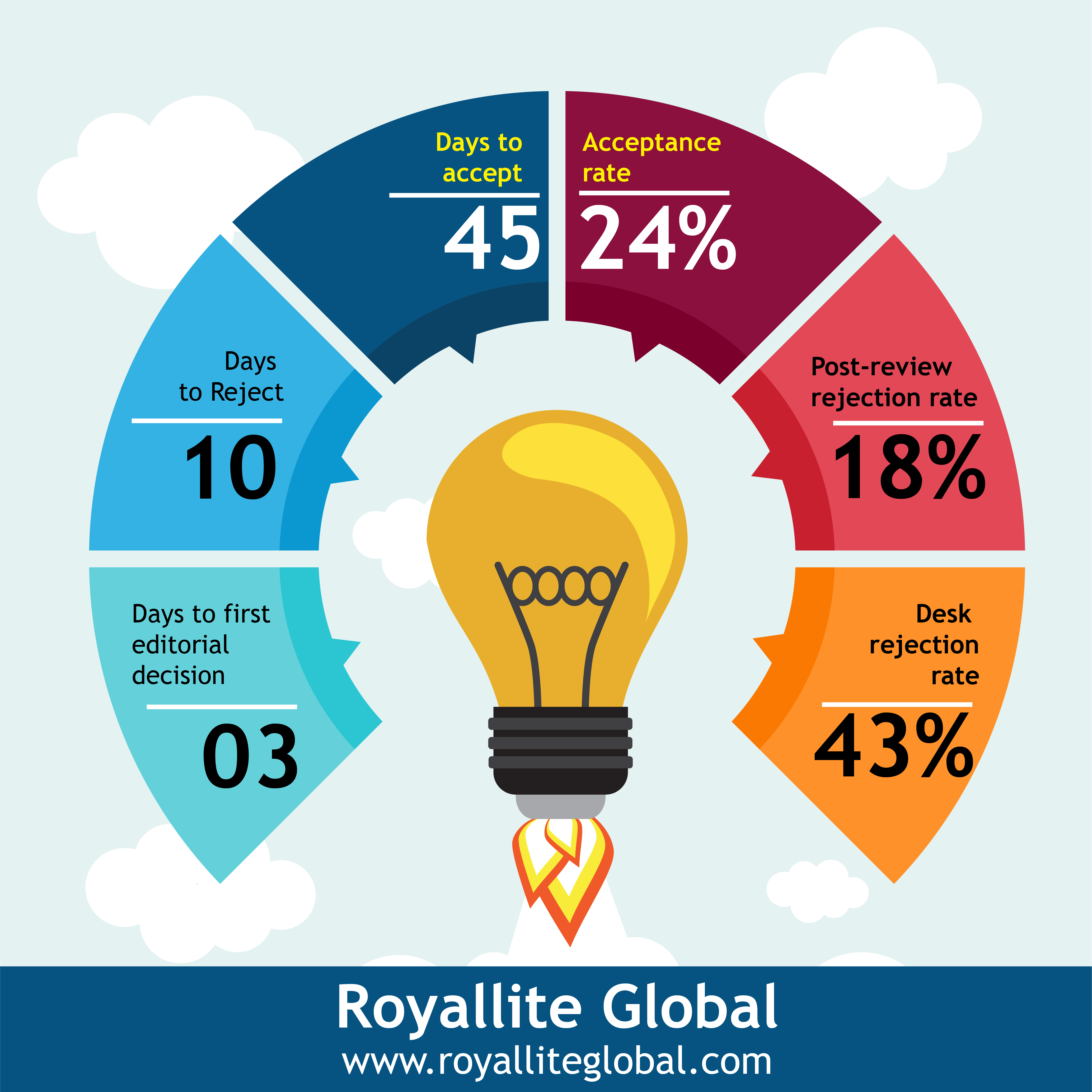An empirical study of Kirkpatrick's evaluation model and perceived competence in hospitality practice: Evidence from undergraduate hospitality students in Kenya
Keywords:
Kirkpatrick’s model, perceived competence, hospitality practice, experiential learningAbstract
The study aimed at examining the effectiveness of Kirkpatrick’s four levels on undergraduate hospitality students’ perceived competence in hospitality practice. It adopted the concurrent mixed methods design and targeted final year undergraduate hospitality students in Kenyan Universities offering hospitality management. A total of 204 students completed questionnaires. In addition, 12 heads of departments and lecturers were interviewed. Data were analyzed using descriptive, thematic and inferential approaches. Structural Equation Modelling (SEM) was used to test the effects of Kirkpatrick’s model’s four levels on perceived competency. The study revealed that both the students and lecturers were satisfied with activities evaluating students at each level. The inferential analysis results confirmed that evaluation of reaction and evaluation of results had positive and significant effects on perceived competence in hospitality practice. Evaluation of behaviour had a negative and significant effect, while evaluation of learning had no significant effect on perceived competence in hospitality practice. It was concluded that each level of the Kirkpatrick’s model had a unique role to play in evaluation. However, future studies should seek to use experimental approaches to replicate the findings.
References
Abdelhakim, A. S., Jones, E., Redmond, E. C., Griffith, C. J., & Hewedi, M. (2018). Evaluating cabin crew food safety training using the Kirkpatrick model: an airlines’ perspective. British Food Journal.
Alsalamah, A., & Callinan, C. (2021). The Kirkpatrick model for training evaluation: bibliometric analysis after 60 years (1959–2020). Industrial and Commercial Training.
Bharwani, S., & Jauhari, V. (2013). An exploratory study of competencies required to co‐create memorable customer experiences in the hospitality industry. International Journal of Contemporary Hospitality Management.
Brinkerhoff, R. O., & Gill, S. J. (1994). The learning alliance. San Francisco, CA: Jossey-Bass.
Bushnell, D. S. (1990). Input, process, output: A model for evaluating training. Training and Development Journal, 44(3), 41- 43.
Chang Ya, H. (2010). An empirical study of Kirkpatrick's evaluation model in the hospitality industry. PhD. Florida international university.
Dewi, L. R., & Kartowagiran, B. (2018). An evaluation of internship program by using Kirkpatrick evaluation model. REID (Research and Evaluation in Education), 4(2), 155-163.
Dorri, S., Akbari, M., & Sedeh, M. D. (2016). Kirkpatrick evaluation model for in-service training on cardiopulmonary resuscitation. Iranian journal of nursing and midwifery research, 21(5), 493.
Draper, F. J. (2012). Development of a Student-Centred Evaluation Framework for Environmental Vocational Education and Training Courses. Development and validation of a Student-Centred Evaluation Framework for Environmental Vocational Education and Training Courses derived from Biggs' 3P Model and Kirkpatrick's Four Levels Evaluation Model (Doctoral dissertation, University of Bradford).
Felicen, S. S., Rasa, L. C., Sumanga, J. E., & Buted, D. R. (2014). Internship performance of tourism and hospitality students: Inputs to improve internship program. International Journal of Academic Research in Business and Social Sciences, 4(6), 42.
Fernandes, T., Morgado, M., & Rodrigues, M. A. (2018). The role of employee emotional competence in service recovery encounters. Journal of Services Marketing.
Francis, K., Wamathai, A., Wandaka, J. K., & Jilo, N. (2020). Analysis of the skills gap in tourism and hospitality industry in Kenya. Journal of Tourism Management Research, 7(1), 42-51.
Goh, W. W., Wong, S. Y., & Ayub, E. (2018). The effectiveness of MOOC among learners based on Kirkpatrick’s model. In Redesigning learning for greater social impact (pp. 313-323). Springer, Singapore.
Gruman, J., Barrows, C., & Reavley, M. (2009). A hospitality management education model: Recommendations for the effective use of work-based learning in undergraduate management courses. Journal of Hospitality & Tourism Education, 21(4), 26-33.
Ho, A. D., Arendt, S. W., Zheng, T., & Hanisch, K. A. (2016). Exploration of hotel managers' training evaluation practices and perceptions utilizing Kirkpatrick's and Phillips's models. Journal of Human Resources in Hospitality & Tourism, 15(2), 184-208.
Ho, A. D., Arendt, S. W., Zheng, T., & Hanisch, K. A. (2016). Exploration of hotel managers' training evaluation practices and perceptions utilizing Kirkpatrick's and Phillips's models. Journal of Human Resources in Hospitality & Tourism, 15(2), 184-208.
Ikwaye, S. (2019). Socio-entrepreneurial practices and community empowerment within the coastal tourism circuit in Kenya (Doctoral dissertation, KeMU).
Ikwaye, S. O., Senaji, T. A., Orero, R. A., & Gesage, M. B. (2019). Influence Of Hotel Enterprises’ Social Cultural Practices On Community Empowerment Along The Coastal Tourism Circuit In Kenya. Advances in Social Sciences Research Journal, 6(7), 587-598.
Jackson, D., & Wilton, N. (2017). Perceived employability among undergraduates and the importance of career self-management, work experience and individual characteristics. Higher Education Research & Development, 36(4), 747-762.
Jiang, L., & Alexakis, G. (2017). Comparing students' and managers' perceptions of essential entry-level management competencies in the hospitality industry: An empirical study. Journal of hospitality, leisure, sport & tourism education, 20, 32-46.
Kamau, S. W., & Waudo, J. (2012). Hospitality industry employers expectation of employees competences in Nairobi Hotels. Journal of Hospitality Management and Tourism, 3(4), 55-63.
Kenny, D. (2015). SEM: Fit. Retrieved October 25, 2021from: http://davidakenny.net/cm/fit.htm
Lin, P. M., Kim, Y., Qiu, H., & Ren, L. (2017). Experiential learning in hospitality education through a service-learning project. Journal of Hospitality & Tourism Education, 29(2), 71-81.
Malubay, G.J.J, Mercado, K.A & Macasaet, E. (2015). Factors Affecting the Decision of Freshmen Students in pursuing Hospitality and Tourism programs in Lyceum of the Philippines University-Laguna:Basis For Enhancement. Laguna Journal of international Tourism and Hospitality Management, 3(1): 23-48.
Mohd Shariff, N., & Zainol Abidin, A. (2015). Developing an index of the Malaysian tourism and hospitality graduates competencies. International Journal of Business and Society, 16(3), 422-435.
Morozov, M., & Morozova, N. (2019, October). Innovative staff training strategies for the tourism and hospitality industry. In 5th International Conference on Economics, Management, Law and Education (EMLE 2019) (pp. 393-396). Atlantis Press.
Newsom, J. (2017). Some Clarifications and Recommendations on Fit Indices. Retrieved October 25, 2021 from: http://web.pdx.edu/~newsomj/semclass/ho_fit.pdf
Patten, M. (2016). Questionnaire research: A practical guide. Routledge.
Reio, T. G., Rocco, T. S., Smith, D. H., & Chang, E. (2017). A critique of Kirkpatrick's evaluation model. New Horizons in Adult Education and Human Resource Development, 29(2), 35-53.
Ren, L., & McKercher, B. (2021). Practical Learning in Hospitality Education. Practical Learning in Hospitality Education.
Rouse, D. N. (2011). Employing Kirkpatrick's evaluation framework to determine the effectiveness of health information management courses and programs. Perspectives in health information management, 8(Spring).
Ruetzler, T., Baker, W., Reynolds, D., Taylor, J., & Allen, B. (2014). Perceptions of technical skills required for successful management in the hospitality industry—An exploratory study using conjoint analysis. International Journal of Hospitality Management, 39, 157-164.
Shum, C., Gatling, A., & Shoemaker, S. (2018). A model of hospitality leadership competency for frontline and director-level managers: Which competencies matter more?. International Journal of Hospitality Management, 74, 57-66.
Sisson, L. G., & Adams, A. R. (2013). Essential hospitality management competencies: The importance of soft skills. Journal of Hospitality & Tourism Education, 25(3), 131-145.
Stansbie, P., Nash, R., & Chang, S. (2016). Linking internships and classroom learning: A case study examination of hospitality and tourism management students. Journal of Hospitality, Leisure, Sport & Tourism Education, 19, 19-29.
Tamketin, A.O. & Bayir, F. (2016). The Impact of Different Demographic Variables on Determinants of University Choice Decision: A Study on Business Administration Students of the Foundation Universities in Istanbul. Educational Sciences: Theory & Practice. 16. 10.12738/estp.2016.4.0195.
Wang, Y.-F., & Tsai, C.-T. (2014). Employability of hospitality graduates: Student and industry perspectives. Journal of Hospitality & Tourism Education, 26(3), 125–135.
Wirtz, J., & Jerger, C. (2016). Managing service employees: Literature review, expert opinions, and research directions. The Service Industries Journal, 36(15-16), 757–788
Yuan, Y., Chuang, N.K., & Gregory, A.M. (2017). An evaluation of essential revenue management competencies: Similarities and differences between practitioners and educators. Journal of Revenue and Pricing Management, 16(5), 513–526. H
Zopiatis, A., & Constanti, P. (2012). Managing hospitality internship practices: A conceptual framework. Journal of Hospitality & Tourism Education, 24(1), 44-51.
Downloads
Published
Issue
Section
Categories
License
Copyright (c) 2021 Alberta A. Onyuna, Jacqueline Korir, Dorothy Rotich

This work is licensed under a Creative Commons Attribution-NonCommercial-ShareAlike 4.0 International License.
This open-access article is distributed under a Creative Commons Attribution (CC-BY) 4.0 license.
You are free to: Share — copy and redistribute the material in any medium or format. Adapt — remix, transform, and build upon the material for any purpose, even commercially. The licensor cannot revoke these freedoms as long as you follow the license terms. Under the following terms: Attribution — You must give appropriate credit, provide a link to the license, and indicate if changes were made. You may do so in any reasonable manner, but not in any way that suggests the licensor endorses you or your use. No additional restrictions You may not apply legal terms or technological measures that legally restrict others from doing anything the license permits.






